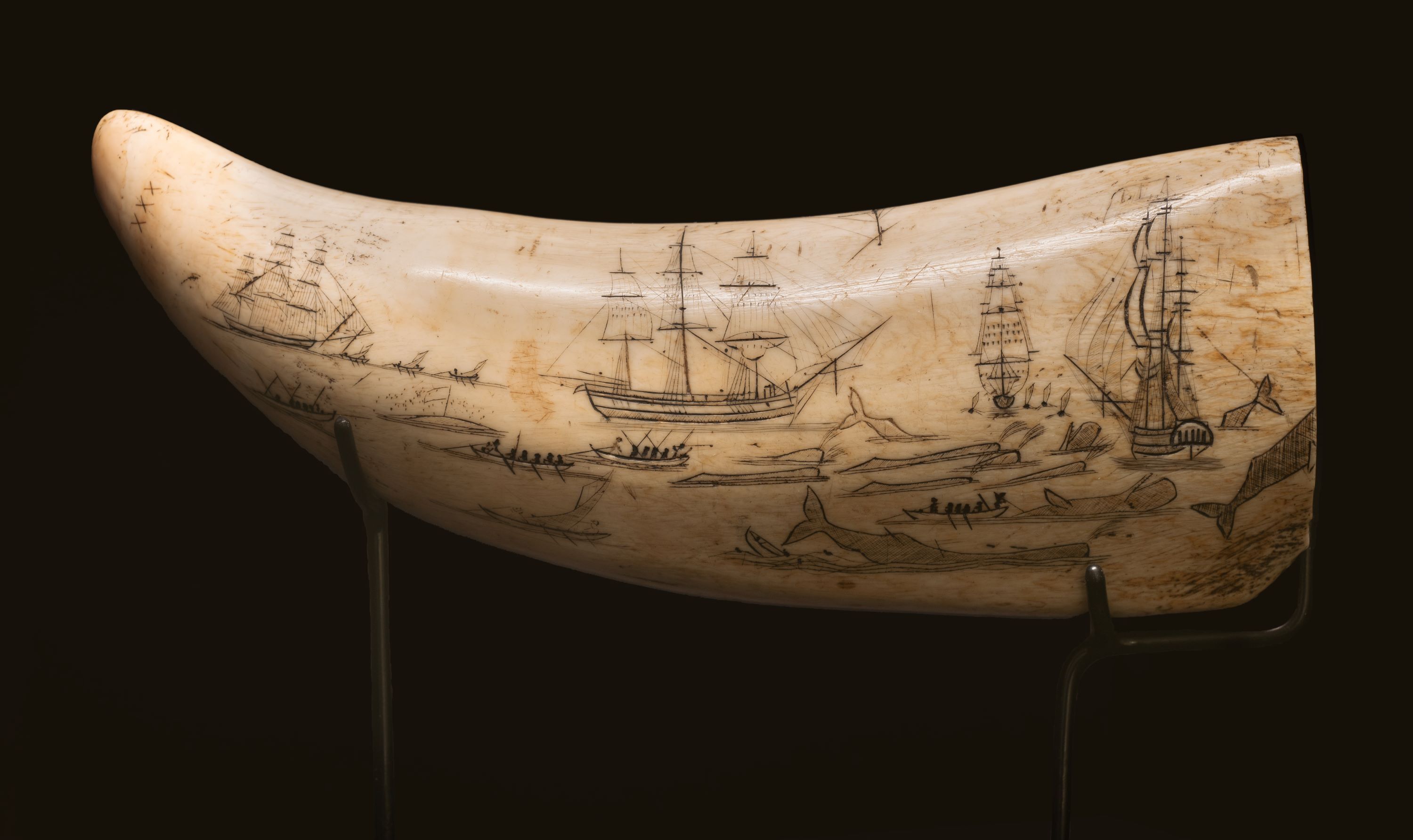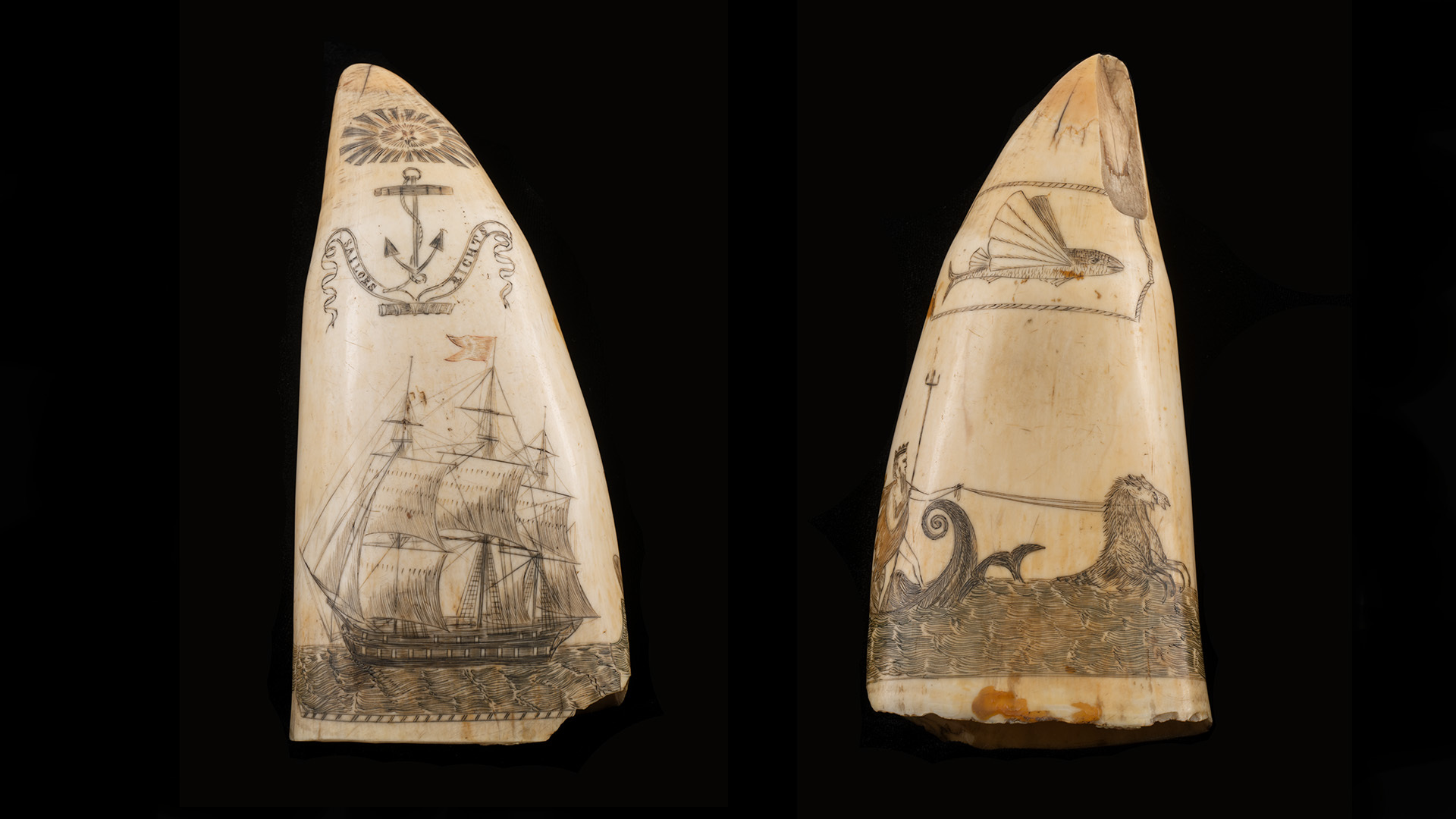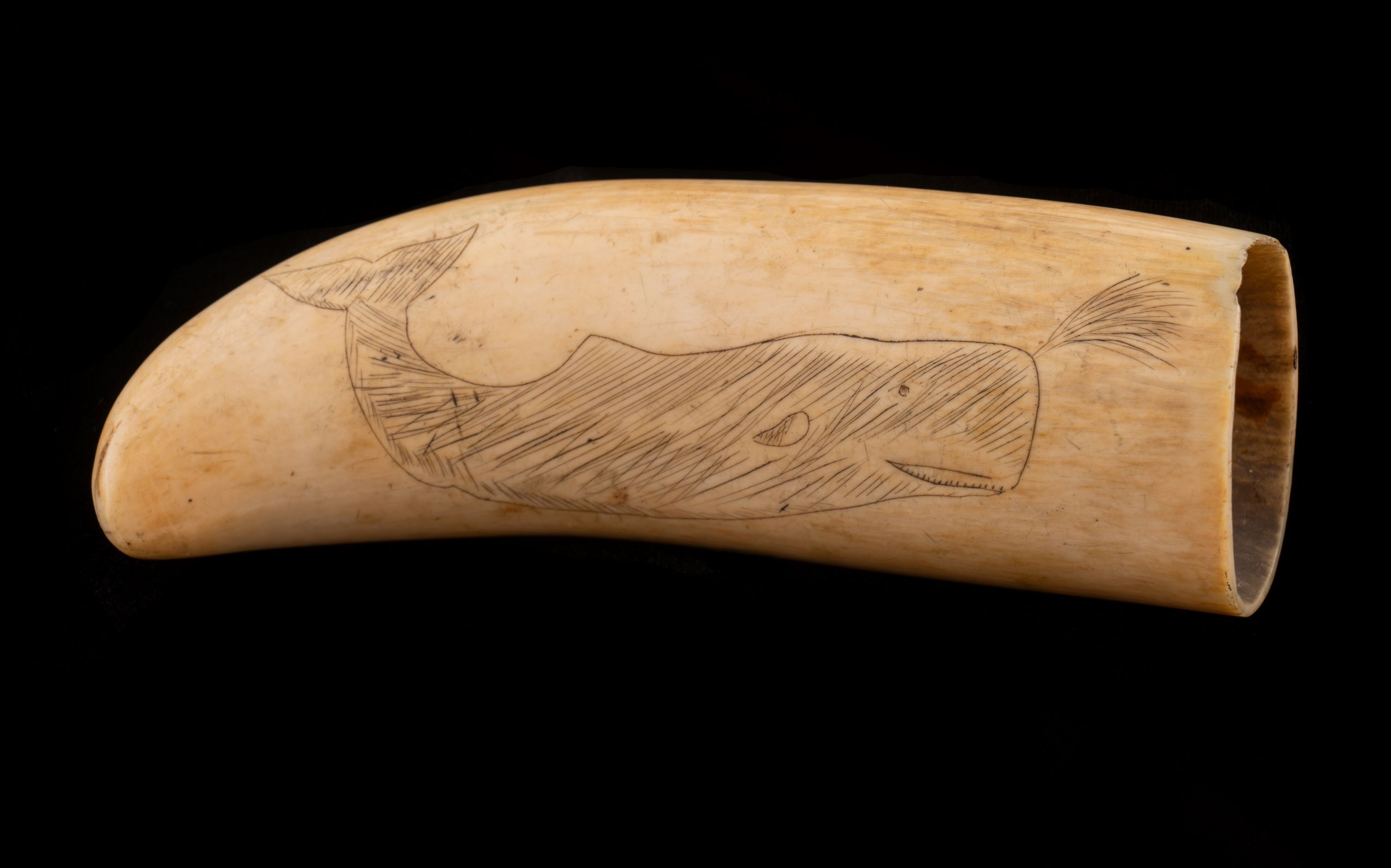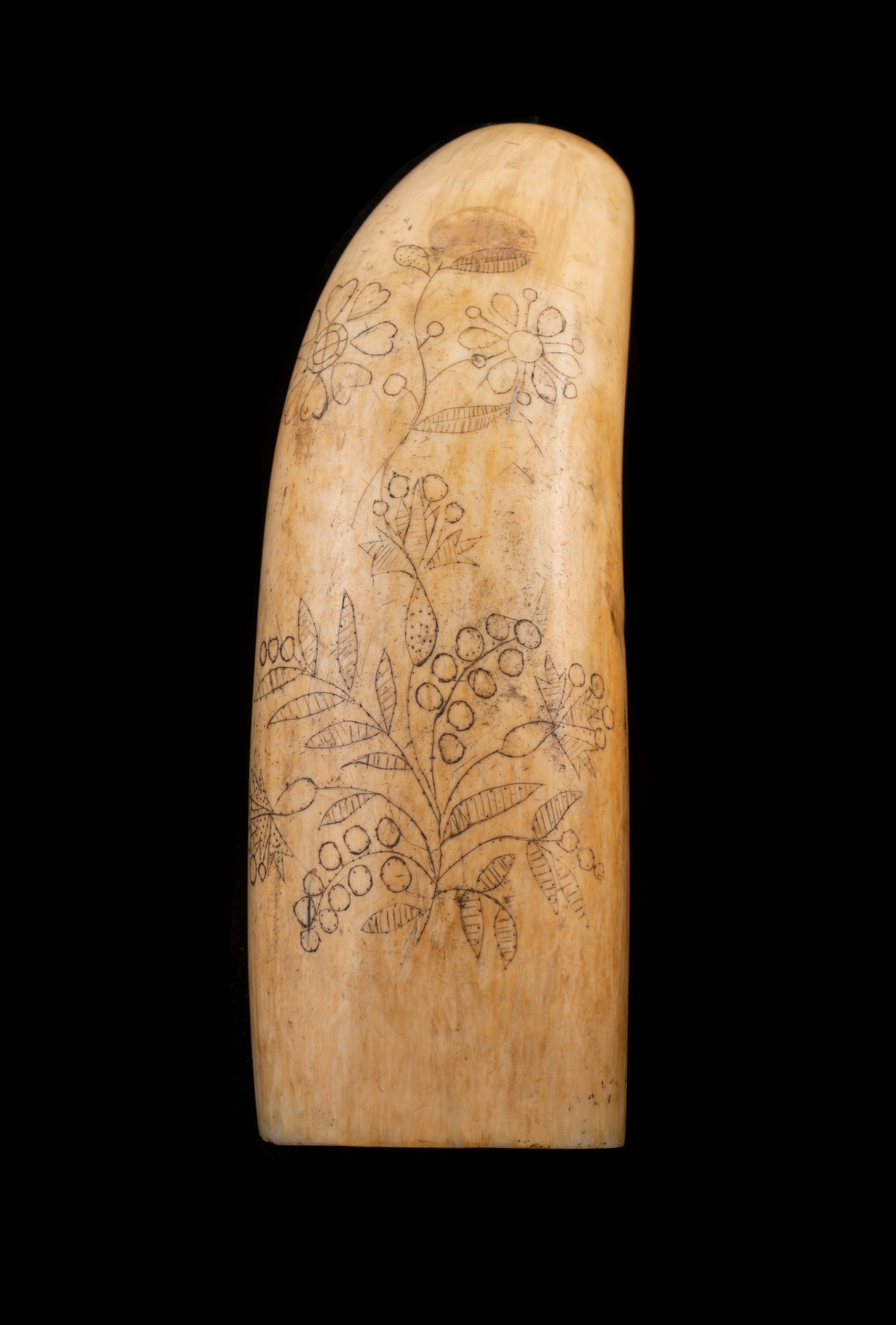Working on a whaling ship in the nineteenth century was one of the worst jobs imaginable.

You spent months at sea, hunting, catching and slaughtering whales. The sea was cold and wild. The work was grisly, brutal and dangerous. There was every chance you would die.
But, amid the brutality, there was also boredom. Sailors endured long idle spells waiting for the lookout perched on top of the foremast to spot a whale for them to hunt and kill. They filled this time by creating art with the only material they had available. They carved scenes from their life into the large teeth pulled from the jaws of slaughtered sperm whales.
This was the art of scrimshaw. The product of boredom and brutality.
Sailors would use their knives to carve artworks featuring tall ships, rowing boats, whales, flowers and mythical creatures into the whale teeth. Then they would rub soot or any dark powder across the carving to make it stand out in black. People that practiced this art were known as scrimshanders. The art form thrived from the 1810s through to its peak in the 1830s and 1840s.
One scrimshaw work in the Canterbury Museum collection depicts a monstrous scene from the life of a whaler. It shows a cluster of tall ships and rowing boats engaged in the terrible struggle of killing whales and pulling them from the ocean. Four tall ships surround about 15 sperm whales, while 11 rowing boats head out to tackle them. Some whales float dead on the surface, others thrash and struggle. One rowing boat has been destroyed, its occupants thrown into the cold ocean.

Canterbury Museum has about 20 examples of scrimshaw in the collection. They were made by sailors from around the world and date back to 1827. One has Neptune’s chariot flying across the waves with the words 'Sailors Rights' etched on the other side. Another features a crude sketch of a whale, water spouting from its blowhole. The other side of the tooth is carved with delicate flowers. It is a piece of naïve art among the gruesome blood and guts of whale slaughter.
It is rare for New Zealand scenes to be depicted on scrimshaw. A whale tooth carved with a detailed scene of Akaroa Harbour is attributed to French artist Charles Meryon and held in the Akaroa Museum’s collection. Christchurch collector Albie Rowse told The Star newspaper in 1978 that only one scrimshaw in his large collection featured a New Zealand design. It was a portrait of a Māori man with tā moko, or facial moko, along with the letters RR and the date 1874.
Scrimshaw stands in contrast to the way Māori used whale teeth. In Pākehā culture, whale tooth carvings were folk art. In Māori culture, a carved rei puta (whale tooth amulet) was rare and finely detailed. Whales were not hunted by Māori, and so whale teeth were only available if a creature was beached. This rarity meant rei puta were highly prestigious adornments in Māori culture.
Sailors valued the whale teeth highly because scrimshaw offered a distraction from the tough life of a whaler. Once the whale had been slaughtered, with the animal's oil carefully harvested for lamps and industry, the sailors would move in for the teeth. Herman Melville’s classic novel Moby Dick describes the scene.

“With a keen cutting-spade, Queequeg lances the gums; then the jaw is lashed down to ringbolts, and a tackle being rigged from aloft, they drag out these teeth, as Michigan oxen drag stumps of old oaks out of wild wood lands. There are generally forty-two teeth in all; in old whales, much worn down, but undecayed.”
It is rare for scrimshaw designs to include writing. That reflects the men who carved them. They were working class, largely illiterate and toiling for years at sea for a tiny share of the profits. The owners of the ship took about 60 to 70% of the takings. The final pay for ordinary seamen was so poor that often they would have to head out to sea again for another potentially deadly whaling trip.
In the decades to come, the scrimshaw works these sailors left behind became treasured works of folk art, collected by museums and enthusiasts across the world. President John F Kennedy was one such collector. He had a scrimshaw on his desk in the Oval Office. After his assassination, his wife Jacqueline Kennedy placed a scrimshaw in his coffin.

These artworks may have enduring appeal because they show that, even in the direst of circumstances, people still have the drive and desire to be creative and capture what it is like to be alive in their world - even if they must carve their story into the tooth of a dead whale with a knife.
They also tell us something else about humanity. They capture the hope that a part of our story may endure after we have gone. Canterbury Museum’s continuing care for these scrimshaw artworks, many years after their creation, shows that hope wasn’t in vain.
Charlie Gates is Senior Communication and Marketing Adviser at Canterbury Museum.





